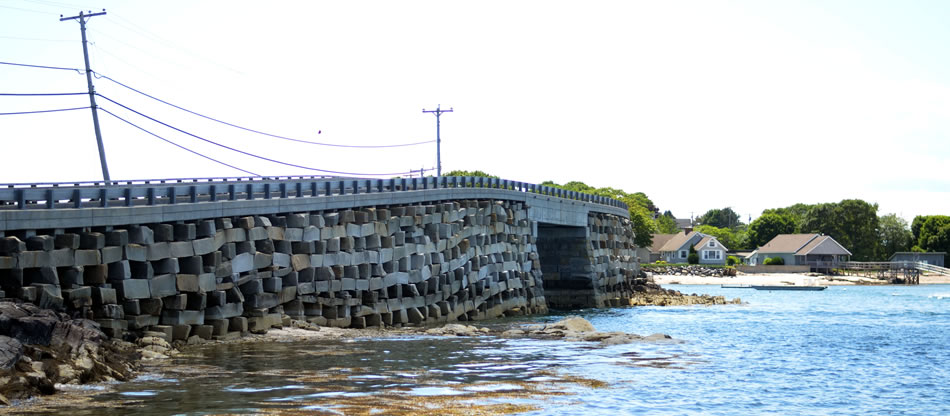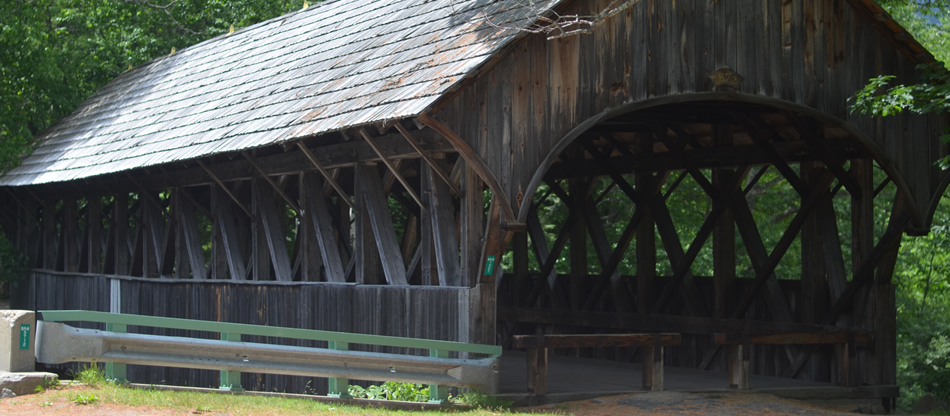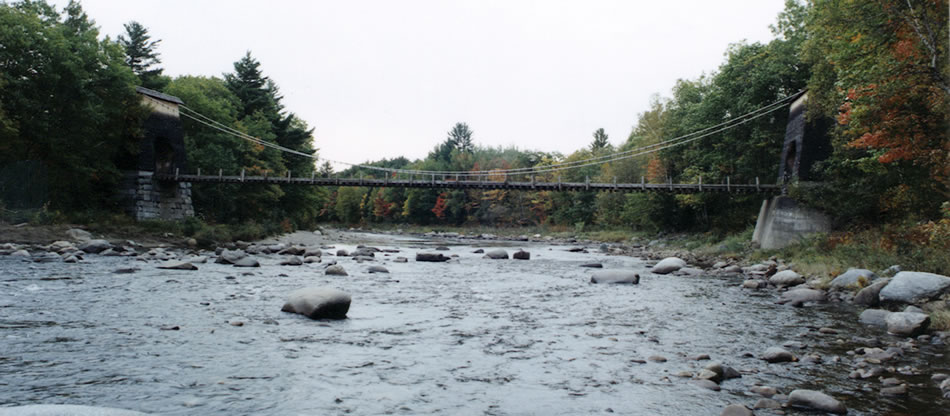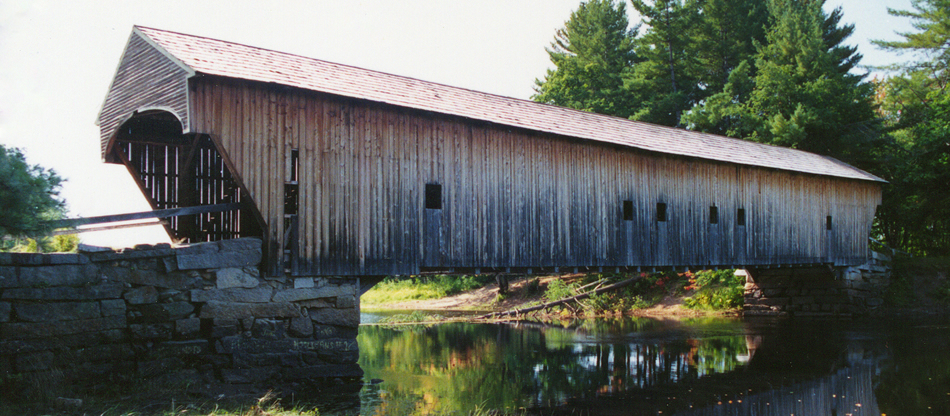Historic Bridges in Maine
Welcome to the MaineDOT Historic Bridges website.
In 1959, the 99th Maine legislature took a major step by enacting a law to preserve Maine's wooden covered bridges. The new law provided that state money could be used to save and renovate covered bridges. As a result, in 1961 the Department of Transportation undertook major renovations to the 10 remaining covered bridges.
Once there were a hundred and twenty covered bridges in the state of Maine, but fire, flood, ice, progress and the Great Freshet of 1896 have removed all but eight original bridges. Two other covered bridges, recently lost to fire and flood, have been reconstructed and are considered to have historical importance. On March 26, 1983 the Morse Bridge in Bangor was destroyed by fire; there are no plans to rebuild it. The remaining covered bridges are scattered throughout the state.
The roof and siding of a covered bridge are the features that give the structure its familiar outlines. Some are thought to be more picturesque than others - Maine's Artist's Covered Bridge over the Sunday River in Newry, for example, has always been a favorite, and someone has said that artists have daubed more paint on their canvases depicting the structure than was ever slapped on its venerable sides. Other bridges look a little like barns unexpectedly left stranded across a stream.
The bridges were covered for one reason - to keep the rain and snow from the massive working timbers. The alternate wetting and drying out of uncovered wooden structures would have resulted in rot and failure decades sooner.
Many people think of covered bridges as quaint relics of the past. Others become expert in describing the manner in which they were built. But, in either case, they represent the inventiveness and know-how of our forefathers, and it seems fitting that they should be saluted for their engineering as well as their charm.
The ingenious way the old bridges were fitted together becomes apparent as soon as you pass through one of their portals. There, under the protecting roof, on either side, are the posts and crisscrossed braces extending from top to bottom "chord" (the chords are the heavy beams parallel to the line of the roadway). The planks of the floor are supported by the bottom chord in the typical covered bridge, which makes it a "through truss" structure.




